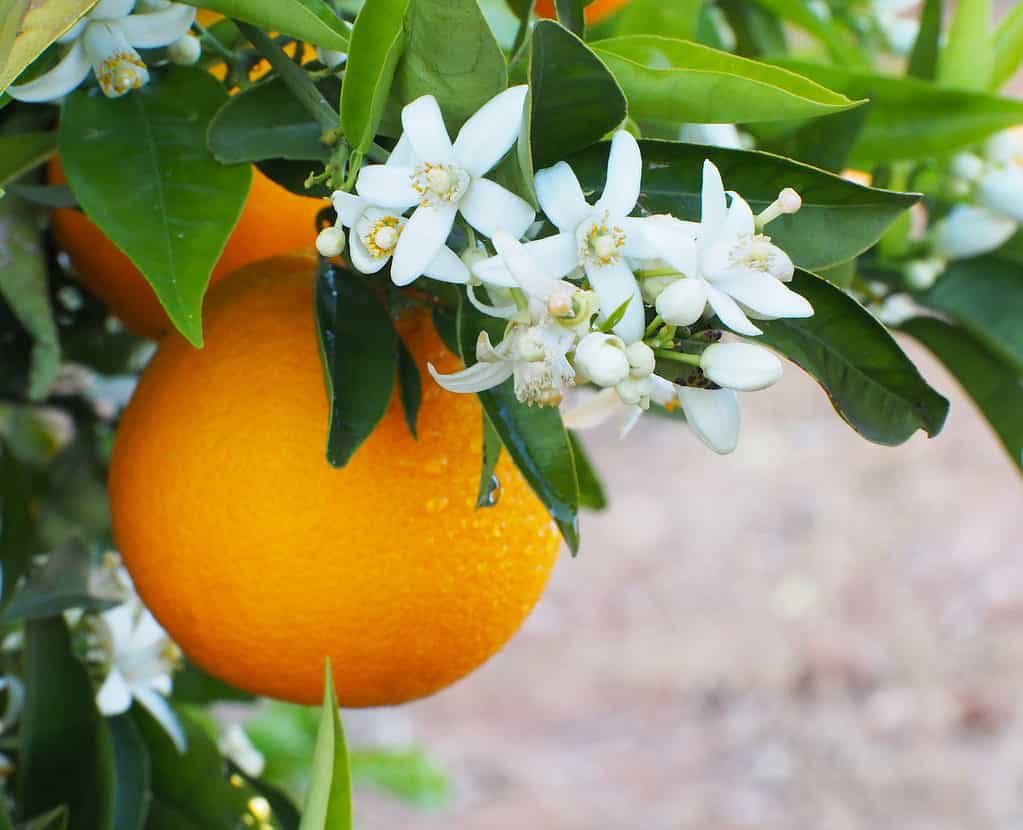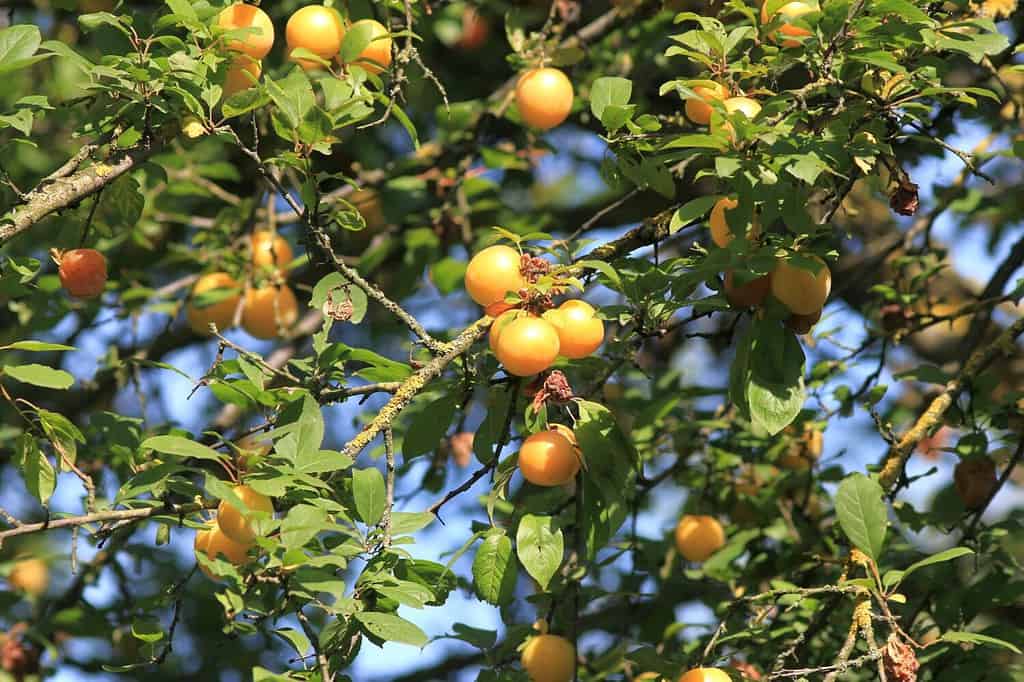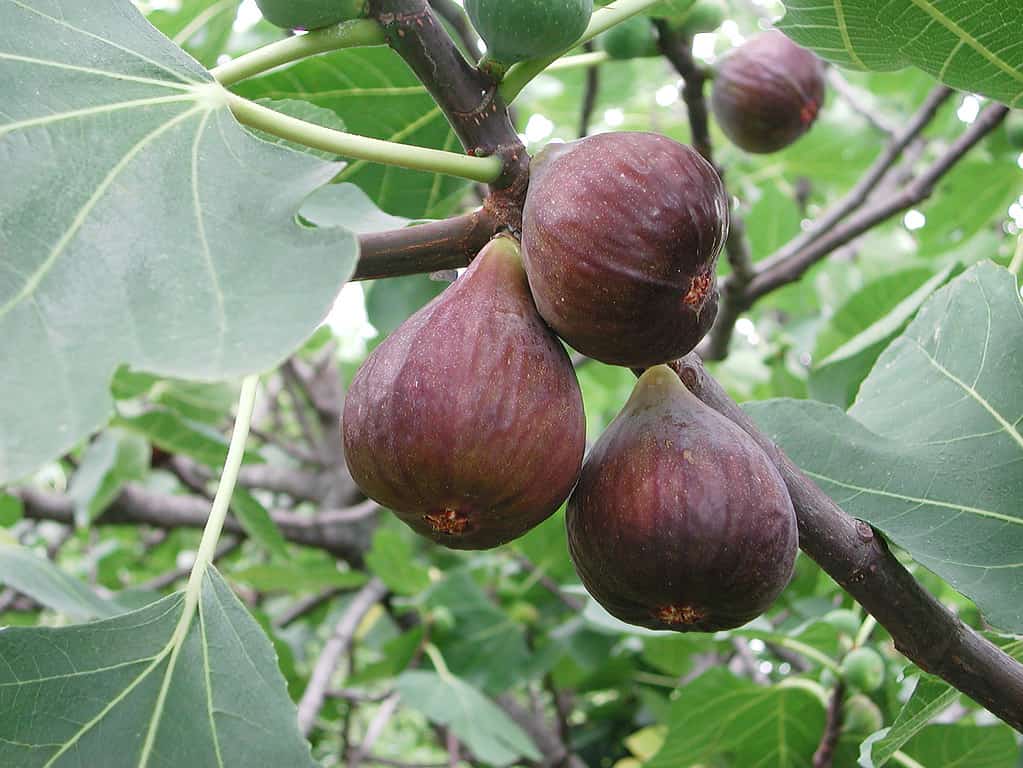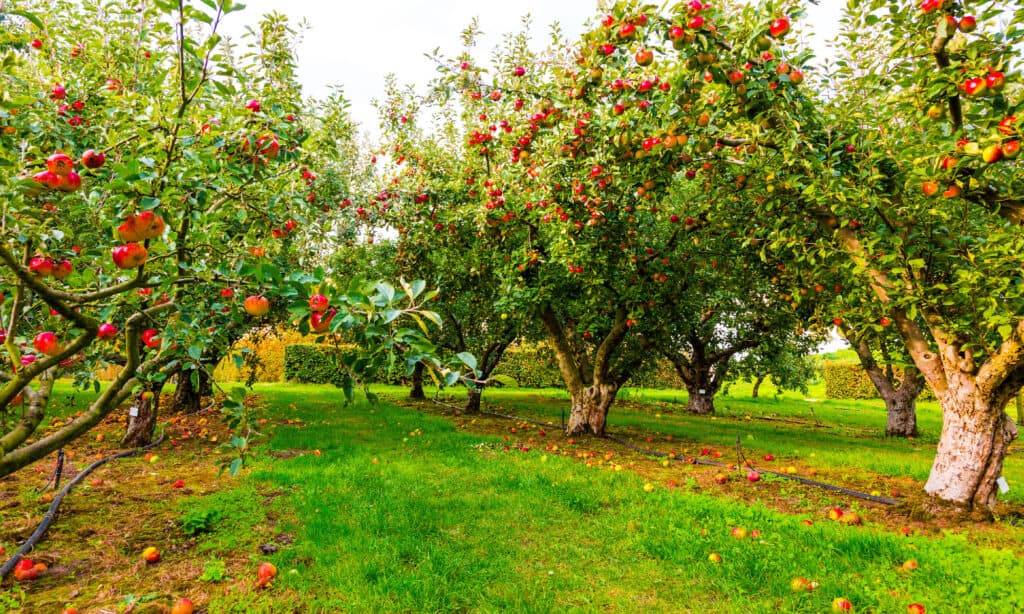Plucking a piece of delicious fruit from a tree in your backyard is one of the most satisfying things a gardener can do. Part of giving your fruit trees the best chance at success is knowing when to put them in the ground. Is winter the best time to plant fruit trees, or should you wait until fall? Let’s answer that question and look at how to plant your fruit trees.
What is The Best Time Of Year to Plant Fruit Trees?

Oranges were first grown in China.
©Iness_la_luz/Shutterstock.com
That depends on how your plant is packaged at the time of purchase. Plant bare root trees in early spring, between February and May. Container trees will grow best when planted in the fall. Bare root trees need time to establish their root systems in the ground before the heat of summer. Container trees already have an active root system. When planted in the summer or fall, these trees establish themselves over the winter. Make sure you are buying trees that will thrive in your area’s climate. Consult the USDA Plant Hardiness Zone Map before purchasing fruit trees.
What is The Difference Between Bare Root and Container Fruit Trees?

Sometimes planted as ornamentals, the fruit of cherry plum trees is edible.
©Dina Rogatnykh/Shutterstock.com
Bare root trees are sold with a soil-free, exposed root system. Removed from any growing medium, bare root trees are dormant. Nurseries sometimes display these trees with their roots wrapped in a plastic bag or pieces of burlap. Store bare root trees in a cool area until planting time. Container trees are sold in a dirt-filled receptacle, which allows the tree to survive until it can be planted in the ground.
Where Should I Plant A Fruit Tree?

Fig trees are pollinated by a particular wasp called a fig wasp.
©simona pavan/Shutterstock.com
Choose a spot with well-draining soil that is loamy and sandy. If necessary, amend the soil with a mixture of sand, compost, perlite, and compost. Fruit trees perform best in full sun exposure, giving them between 6-8 hours of sunlight per day. Avoid planting fruit trees near structures that may be damaged by the tree’s expanding root system.
How Do I Plant a Bare Root Fruit Tree?

Making room for a new tree takes some effort!
©NAILOTL/iStock via Getty Images
Prepare the tree for its new home by soaking its roots in water for anywhere between two to 24 hours. Rehydrating the roots before planting introduces water to the dormant tree, essentially waking up the plant. Plant the tree immediately after soaking. Clear weeds and grasses from the planting area. Examine the root system and prune away any dead roots. Make sure that all the roots are the same length.
Two elements dictate how deep and wide the hole for the new tree should be dug. First, find the tree’s trunk flare. That is the point where the trunk of the tree begins to meet the roots. The depth of the hole should be even with the surface of the ground. Secondly, the hole should be wide enough to accommodate the tree’s root system while allowing for expansion. Aim to make the hole twice as wide as the tree’s roots.
In the middle of the hole, create a raised heap of dirt. Put the tree on top of the cone, evenly placing the roots over the soil mound. Begin refilling the hole with soil, packing it tightly enough to support the tree. Thoroughly water the tree after filling the hole. Staking the tree may be required until it becomes well-established.
How Do I Plant a Container Fruit Tree?

Mature peach trees produce fruit in the summertime.
©Crisp0022/Shutterstock.com
Clear the planting site of grass, weeds, and debris. Consider the size of the container. When you dig the hole, make sure it is two to three times as wide as the container. This will allow the roots to spread and grow strong. Flatten the dirt at the bottom of the hole, which should only be deep enough to hold the root ball. Remove the tree from the pot and gently loosen the soil. Examine the roots. Snip and discard roots that are dead, knotted, or encircling the root ball. Place the tree in the hole with the surface of the root ball slightly above the rest of the ground. Replace the soil, making sure to break clods and clumps that could cause air pockets or poor drainage. Thoroughly water the planting site.
Should I Plant More Than One Fruit Tree?

Apple trees require cross-pollination to bear fruit.
©Tommy Lee Walker/Shutterstock.com
If you have the room, it’s a good idea. Fruit comes from flowers. Like any flower, fruit tree blooms need to be pollinated. Pollen can be transferred from tree to tree by the wind or pollinators like bees. While some trees are self-fruiting, like sour cherry trees, others must be cross-pollinated with pollen from a different variety of the same kind of tree. Planting another tree nearby increases the chances of getting a bountiful, viable harvest. Ask your retailer or contact your local county extension office for guidance.
The photo featured at the top of this post is © David Tadevosian/Shutterstock.com
Thank you for reading! Have some feedback for us? Contact the AZ Animals editorial team.







